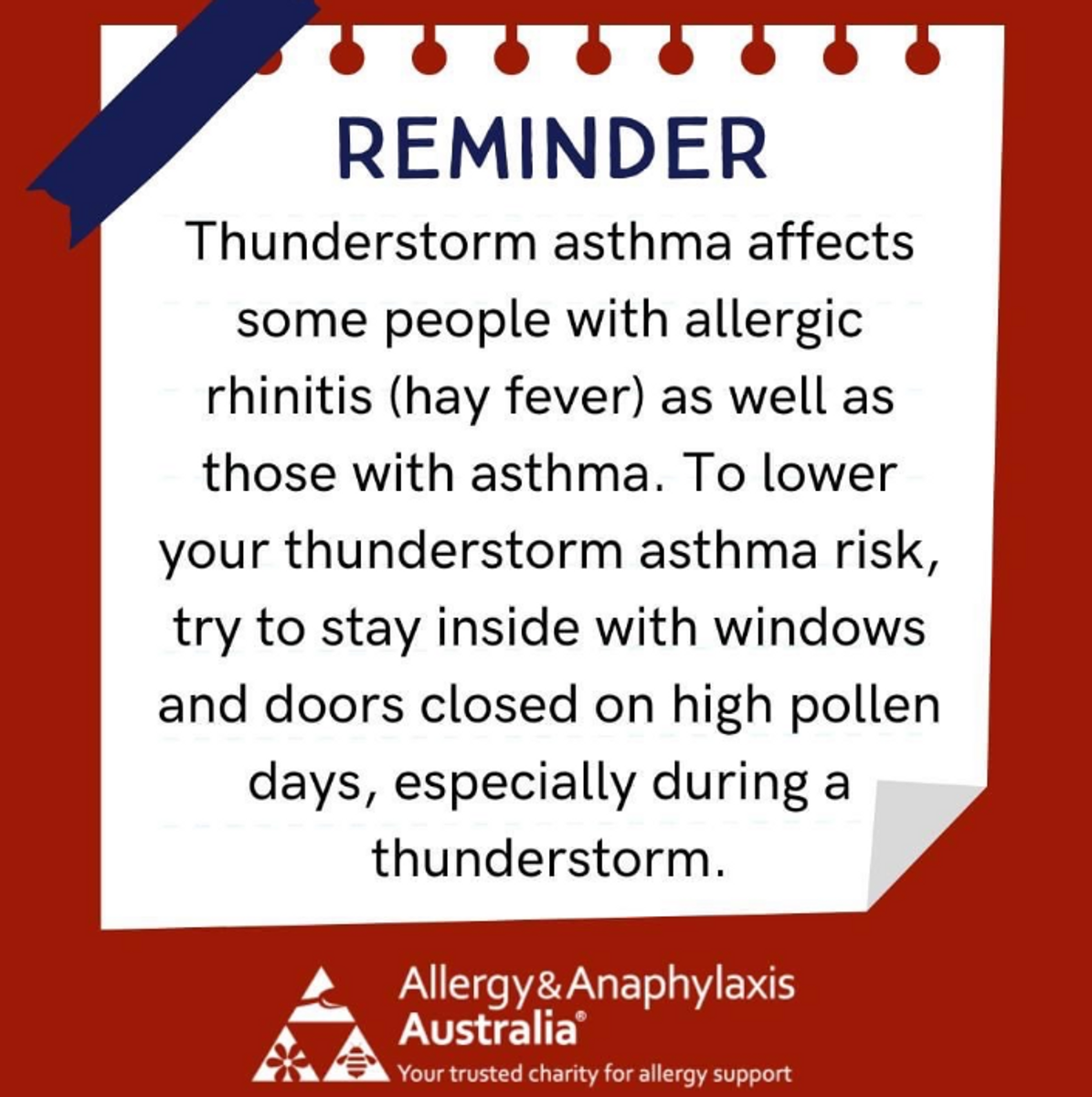Hay Fever and Risk of Thunderstorm Asthma
October and December: High Risk Months - Advice from the Department of Education and Training

Hay Fever and Risk of Thunderstorm Asthma
October and December: High Risk Months - Advice from the Department of Education and Training
Grass pollen season, which runs from October to December each year, brings an increase in asthma and hay fever symptoms. It also increases the risk of thunderstorm asthma. For people with asthma or hay fever, especially those who experience wheezing or coughing with their hay fever, thunderstorm asthma can be sudden, serious and even life threatening.
During pollen season, there are some things you can do to prepare and protect yourself and your family:
Protect yourself this pollen season – managing asthma and allergies matters.
It is important for students to manage any hay fever or asthma symptoms, as these conditions can produce symptoms such as fever, chills, cough, sore throat, shortness of breath, runny nose, and loss or change to sense of smell or taste, which are similar to COVID-19 symptoms.
If your child experiences these symptoms in different or worse ways to their usual hay fever or asthma symptoms, medical advice should be sought.
For more information, visit your general practitioner (GP) or visit the Better Health Channel.

